Neurosurgery Bonn
State-of-the-art surgical methods
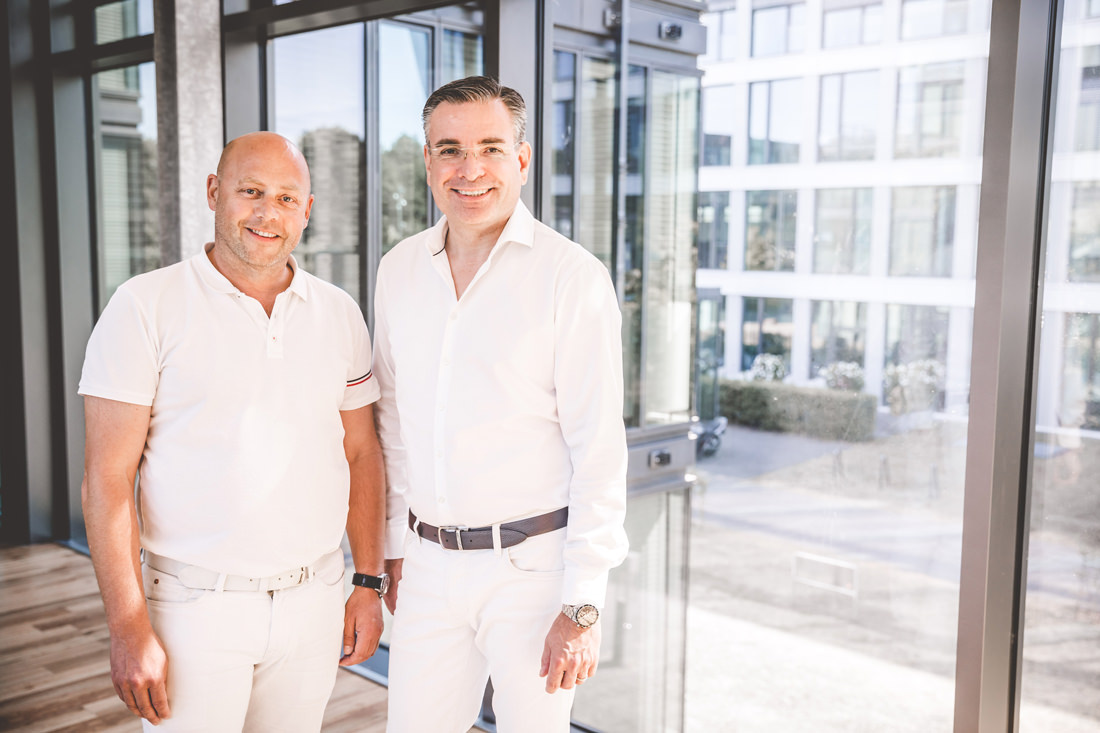
Neurosurgery is a medical specialty that deals with the detection and surgical treatment of diseases, injuries and malformations of the central nervous system and its sheaths, the peripheral and autonomic nervous system. It also includes comprehensive diagnostic examinations, surgical treatment, conservative treatment and rehabilitation. This also applies to Neurosurgery Bonn: the team led by Dr. Axel Jung and Prof. Thomas Gasser offers diagnostics and treatment at the highest medical and professional level.
In addition to their extensive experience, the neurosurgical specialists at our practice use state-of-the-art surgical technology. Most operations are performed using a powerful surgical microscope with microsurgical technology. Computer-assisted neuronavigation, MRI and Doppler ultrasound as well as electrophysiological monitoring are standard procedures for interventions in functionally critical brain and nerve regions.
In addition, with neurology, neuroradiology, anesthesia, otorhinolaryngology, ophthalmology and oral and maxillofacial surgery, we have the expertise of the most important neighboring disciplines in close proximity. We also work closely with our colleagues in endocrinology. This enables us to develop an individual and holistic treatment plan, even for complex cases. We coordinate all preliminary and follow-up examinations for you as well as the subsequent physiotherapy with our Sports & Rehabilitation department.
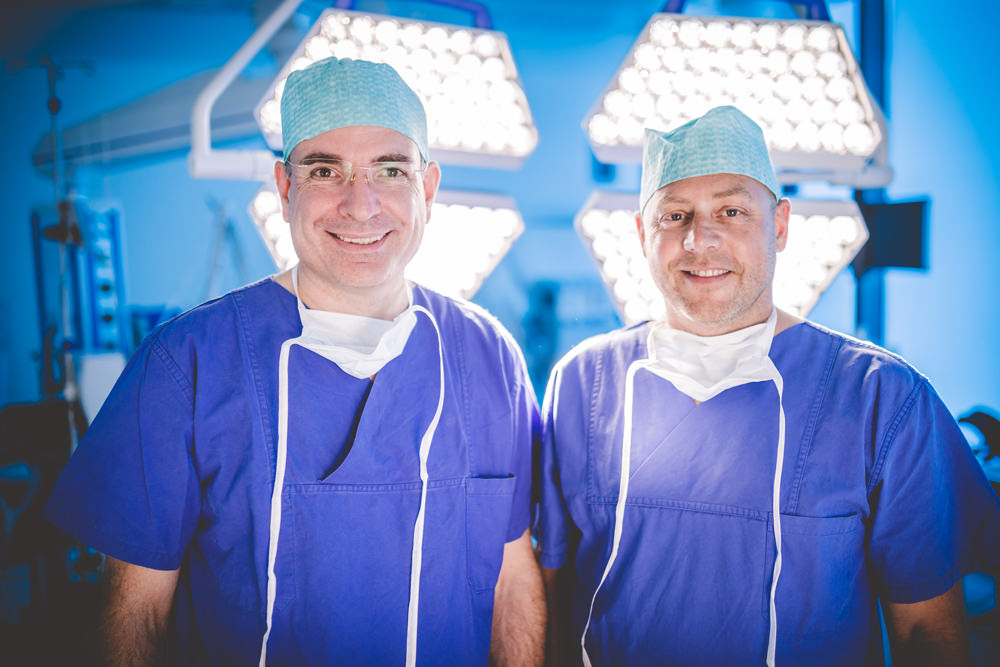
Head and brain surgery
At the Bonn Neurosurgery Department, diseases of the head and brain are operated on according to the latest scientific findings. Where possible, the operations are minimally invasive.
- Tumors
- Vascular malformations (aneurysm, AV angioma/fistula)
- Closure of blood vessels
- Trigeminal neuralgia (facial pain)
- Glossopharyngeal neuralgia (shooting, stabbing pain in the throat)
- Spasmus hemifacialis (facial spasm: shooting, painful spasms of the facial muscles)
- Hydrocephalus (accumulation of cerebrospinal fluid)
- Navigation-assisted microsurgery of brain tumors
- Awake brain surgery
- Biopsies (tissue sampling)
- Shunt surgery (short-circuit connection) – for nerve water congestion
- Microvascular decompression (Jannetta operation) – pressure relief for trigeminal neuralgia
- Microsurgery for vascular malformations
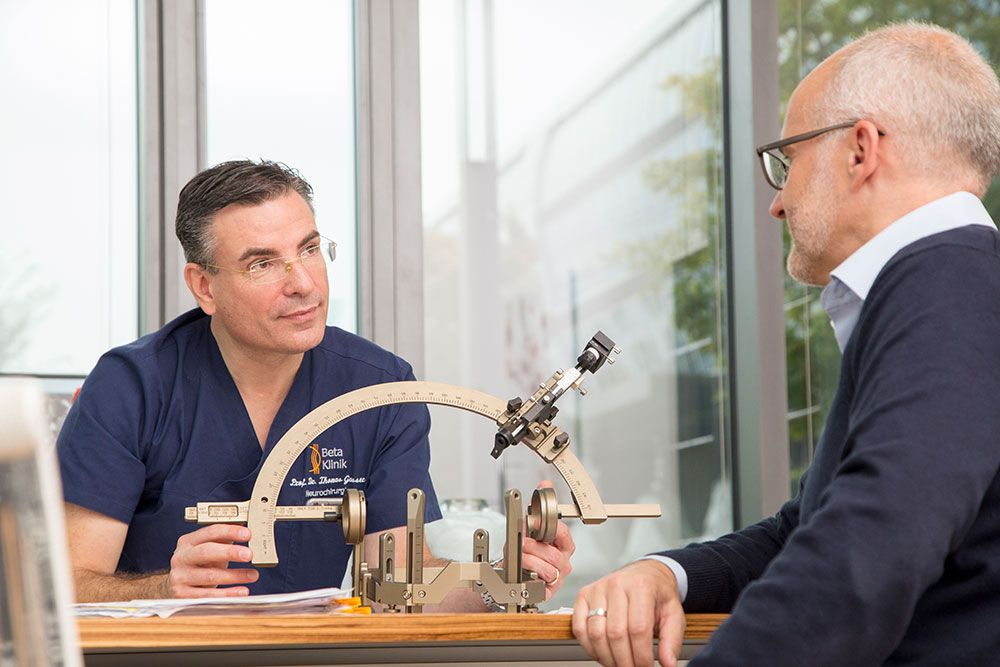
Stereotaxy and functional neurosurgery
Functional neurosurgery and stereotaxy are a great hope for patients with neurological/psychiatric diseases and brain tumors as well as chronic pain syndromes. This is because stereotaxy is a procedure that makes it possible to determine the target point in the brain with millimeter precision. It is also used in our neurosurgery department in Bonn for neurosurgical operations, for example for taking tissue samples from brain tumors, for the targeted and therefore gentle removal of deep-seated brain tumors, for acute treatment of patients with cerebral hemorrhages and for the therapeutic insertion of drains to introduce medication into the brain.
Stereotactic brain surgery is a minimally invasive surgical procedure. We work with imaging techniques in the operating theater that help us to precisely determine and maintain surgical distances and access routes. This makes it possible to operate with virtually no injuries. For example, the smallest cell samples can be taken to clearly determine the type of tumor. This information is essential for further treatment planning in order to decide whether radiotherapy or surgical, microsurgical removal of the tumor makes sense.
We also use stereotactic surgery to treat movement disorders such as essential tremor, generalized dystonia, idiopathic Parkinson’s syndrome and some forms of chronic, therapy-resistant pain. The centers in the brain that control the body’s movements are interconnected by nerve pathways. There are inhibitory and excitatory connections. A sophisticated balance of inhibition and excitation ensures orderly movement sequences.
However, if the balance is disturbed, this can lead to excessive movements, such as dystonia, or reduced movements, such as Parkinson’s disease. This disturbed balance can be corrected by deep brain stimulation. Depending on the disease, a specific target point in the brain is selected in our neurosurgery department in Bonn, into which a thin electrode is implanted. This is connected to a small stimulator via a connecting cable under the skin. The stimulator continuously emits electrical impulses via the electrode so that the surrounding nerve cells are inhibited.
The high-precision stereotactic procedure allows the specialists at our neurosurgery practice in Bonn to implant electrodes in a narrowly defined area of the brain, which is usually located in deep regions of the brain. This is where the name “deep brain stimulation” or DBS for short comes from. This implantation of “brain pacemakers” for high-frequency deep brain stimulation is one of the most modern medical procedures that we can carry out for you.
- Movement disorders (essential tremor, idiopathic Parkinson’s syndrome, generalized dystonia)
- Chronic, therapy-resistant pain
- Stereotaxy and functional neurosurgery, for example:
- Tumor biopsy (tissue sampling)
- Implantation of “brain pacemakers” (deep brain stimulation/THS) – for movement disorders and chronic, therapy-resistant pain
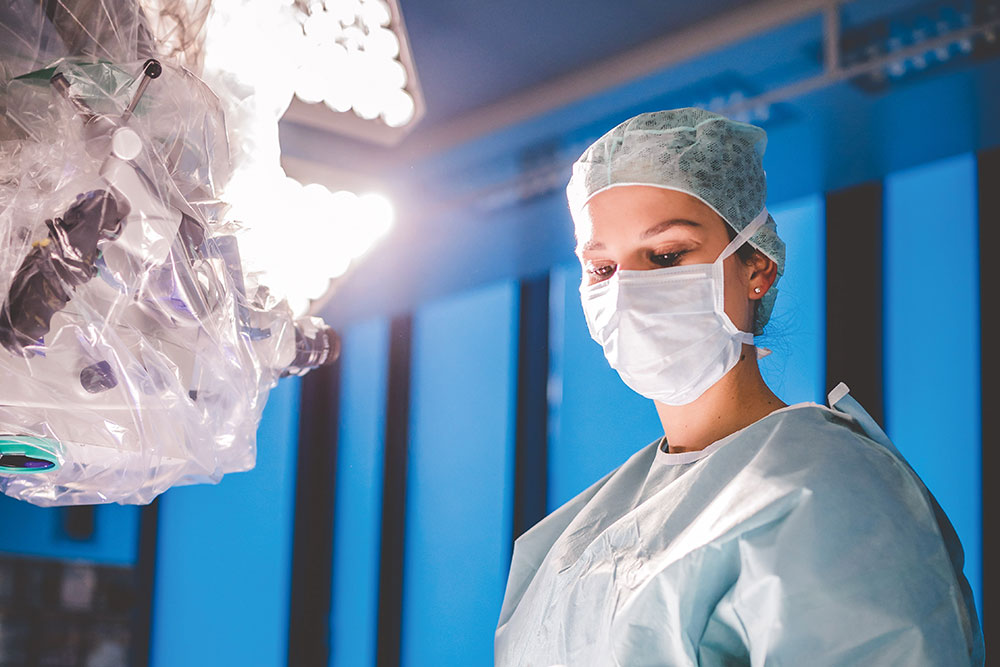
Gentle spine surgery
The neurosurgeons and neurointerventionalists at our joint practice focus on gentle and efficient operations on the spine. Minimally invasive procedures are also used in this area whenever medically possible and appropriate. For surgical interventions, the neurosurgeons have access to a comprehensive range of high-precision diagnostic and surgical techniques.
A highly qualified treatment team and the use and development of innovative surgical techniques also characterize Bonn Neurosurgery. State-of-the-art anaesthesia procedures and optimized surgical procedures also ensure low-risk and maximum comfort for patients. Critically ill patients are then closely monitored and optimally cared for in our intensive care unit.
- Herniated disc
- Spinal canal stenosis (narrowing of the spinal canal)
- Instability/sliding vertebrae
- Vertebral joint arthrosis/facet syndrome
- Osteoporosis/vertebral fracture
- Vascular malformations
- Spinal tumors / metastases
- Endoscopic disc surgery – for herniated discs in the lumbar spine
- Microsurgery/decompression – for herniated discs and spinal canal stenosis Intervertebral disc prosthesis (ADR) – for example for herniated discs in the cervical spine
- Spinal cord stimulation (SCS) – for therapy-resistant, chronic pain
- Stabilization/fusion – for instability/sliding vertebrae
- Vertebroplasty and kyphoplasty – for vertebral fractures
- CT-supported microtherapy – for back pain
- Coiling (platinum coil) and embolization (closure of blood vessels) – for vascular malformations (spinal cord)
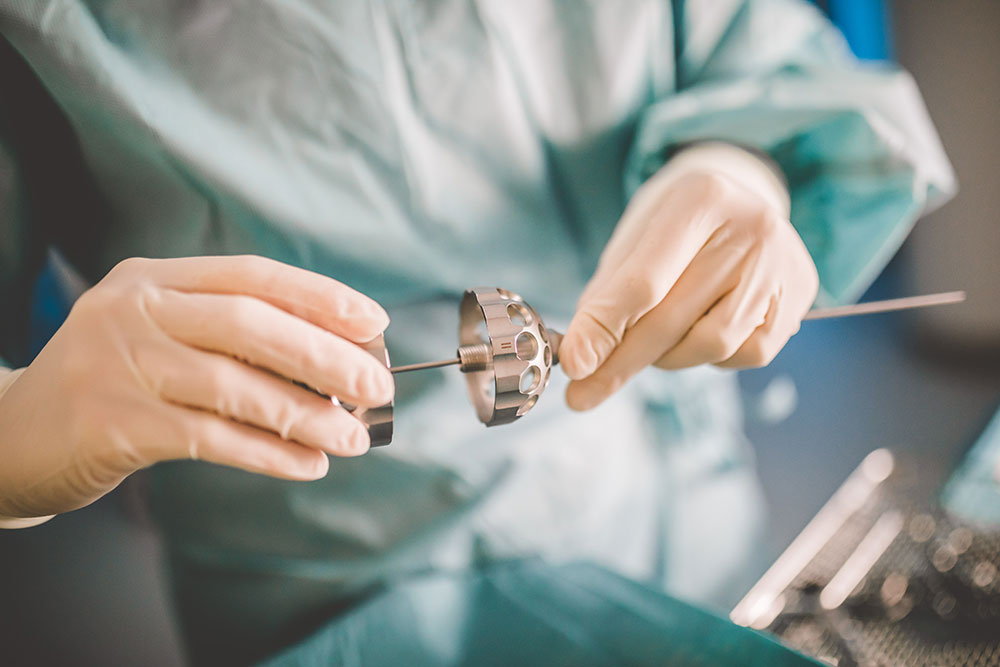
Eliminate the bottleneck
Diseases of the nerves outside the brain and spinal cord are also treated in our practice. Patients often suffer from so-called bottleneck syndromes. In such cases, a nerve is trapped – for example by connective tissue, bone or muscle. This can lead to pain, discomfort, numbness, loss of strength, muscle atrophy and even paralysis. If these dysfunctions are ignored, they can lead to permanent damage. If the problem is recognized in time, the nerve can heal completely. To do this, the bottleneck must be removed by a minor surgical procedure.
Before the surgical procedure, we first measure the electrical conductivity of the nerves in our neurosurgery department in Bonn to determine which nerve is causing the pain. In a microsurgical operation, we then free the nerve from its bottleneck by carefully removing tissue that is pressing on the nerve in a way that is gentle on the tissue.
- Bottleneck syndromes (pinched peripheral nerves) such as
- Carpal tunnel syndrome (wrist canal)
- Tarsal tunnel syndrome (ankle)
- Sulcus ulnaris syndrome (elbow)
- Morton’s metatarsalgia (forefoot)
- Meralgia paraesthetica (groin)
- Microsurgical decompression (removal of the bottleneck of a peripheral nerve)
- Endoscopic surgery of the peripheral nerves
